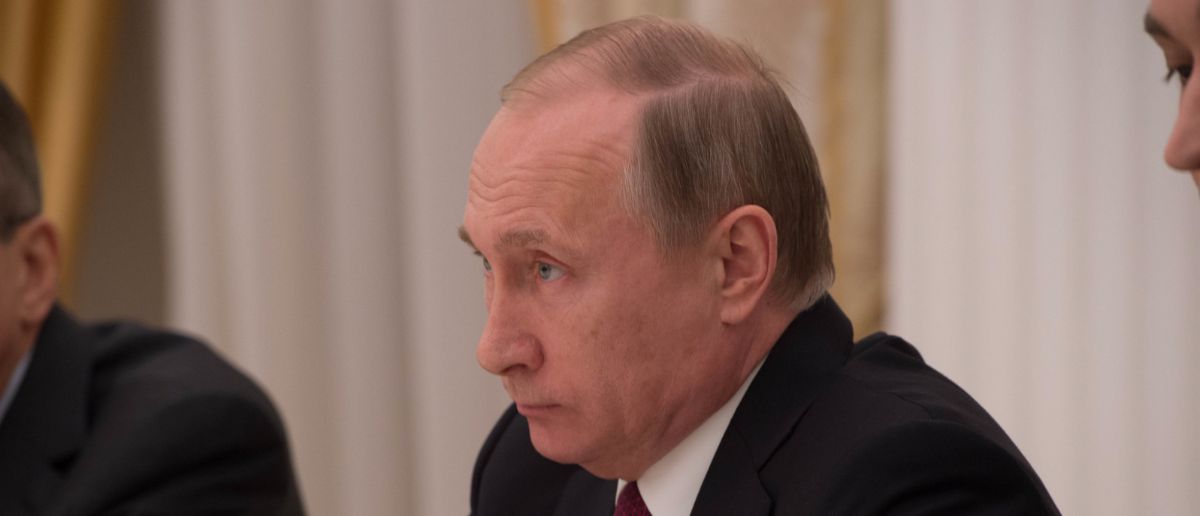Russia launches nuclear-capable missile in a jaw dropping escalation
The Russian Federation has gone off the deep end. There’s no telling if there is an off ramp now.
And now Russia launched a nuclear-capable missile in a jaw dropping escalation.
Russia escalated its war on Ukraine by launching an intercontinental ballistic missile (ICBM) during a missile strike on Thursday, according to Kyiv’s air force.
This marks the first known deployment of such a long-range, nuclear-capable weapon in the nearly three-year-old conflict.
The launch followed Ukraine’s use of U.S. and British missiles to target Russian sites earlier in the week, actions that Moscow has repeatedly warned could provoke a major escalation.
While the Kremlin did not immediately comment on the Ukrainian report, ICBMs are traditionally part of Russia’s nuclear arsenal and are designed to deliver devastating payloads across thousands of kilometers.
Ukraine did not specify whether the missile was nuclear-armed or disclose its exact type, and there is no indication it carried a nuclear warhead.
The missile attack reportedly hit critical infrastructure and industrial facilities in Dnipro, a city in east-central Ukraine.
Regional governor Serhiy Lysak confirmed damage to an industrial enterprise and fires caused by the strikes, adding that two people sustained injuries.
Russia’s barrage also included a Kinzhal hypersonic missile and seven Kh-101 cruise missiles, six of which were intercepted by Ukraine’s defenses.
“In particular, an intercontinental ballistic missile was launched from the Astrakhan region of the Russian Federation,” Ukraine’s air force stated, without elaborating on the missile’s target or impact.
Defense Express, a Ukrainian defense consultancy, raised concerns about whether the United States had been notified of the launch in advance, as such notifications are crucial for preventing accidental escalation between nuclear powers.
“It is also a question of whether the United States was warned about the launch and its direction, as the announcement of such launches is a prerequisite for preventing the triggering of a missile warning system and the launch of missiles in response,” the group noted.
The attack comes amid escalating tensions as the war reached its 1,000th day. This week, Ukraine fired U.S.-supplied ATACMS missiles and British Storm Shadow cruise missiles at targets inside Russian territory, including the Kursk region.
Moscow has long declared such strikes as crossing a red line, while Kyiv defends them as necessary to counter Russian aggression.
Adding to the tension, the U.S. temporarily shut its embassy in Kyiv on Wednesday, citing fears of significant air attacks. It reopened the next day as the situation stabilized.
With just weeks left before President Joe Biden leaves office and Donald Trump assumes the presidency, the stakes are rising.
Ukraine’s latest strikes came after Biden authorized the use of ATACMS missiles, demonstrating his continued support for Kyiv.
However, Trump has signaled a markedly different approach, criticizing the billions of dollars spent on Ukraine under Biden and promising to bring the war to a swift end.
Both sides appear to be maneuvering for a stronger position ahead of Trump’s likely push for peace talks — discussions that have been largely absent since the early months of the war.
Moscow and Kyiv alike seem determined to achieve maximum leverage before sitting at the negotiating table.
Russia has consistently denounced the use of Western-provided weaponry for attacks deep inside its territory, calling it a major escalation. Meanwhile, Kyiv argues that these strikes are essential to disrupt Moscow’s supply lines and undermine its war efforts.
With ICBMs now entering the mix, the conflict takes on an even more dangerous dimension, raising the specter of miscalculation and underscoring the urgent need for a resolution — one that Trump has vowed to deliver.
Stay tuned to the DC Daily Journal.












